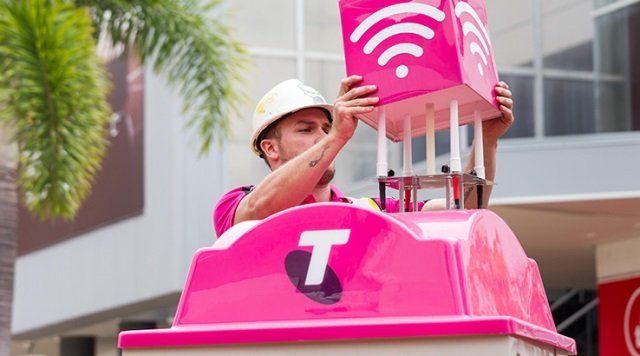Telstra CEO Andrew Penn has provided a lower revenue target for the fiscal 2020 despite the telecom operator is aggressively expanding its 5G network in Australia.
 Telstra said its revenue will be $25.7-$27.7 billion during the financial year 2020 as against $27.8 billion reported for fiscal 2019.
Telstra said its revenue will be $25.7-$27.7 billion during the financial year 2020 as against $27.8 billion reported for fiscal 2019.
Telstra, which is following the T22 strategy, is aiming to achieve EBITDA of $7.3-$7.8 billion in financial year 2020 as compared with $8 billion in the previous fiscal.
Telstra is planning to spend $2.9-$3.3 billion towards capital expenditure (Capex) in line with its 5G network roll out strategy.
Capex
Telstra is looking for lowering the sales to Capex ratio to 12 percent from 14 percent it achieved during fiscal 2019. Telstra CTO Nikos Katinakis joined the telecom operator in October 2018 from Reliance Jio, the world’s second largest telecom operator with 340 million mobile phone subscribers.
Nikos Katinakis, as the group executive of Networks & IT, is responsible for ensuring Telstra delivers next generation network technologies including the rolling out 5G network, as well as maintaining and enhancing Telstra’s IT platforms.
Telstra said it is the first mobile service provider to launch 5G in Australia and the first telecoms to start offering 5G handsets.
Telstra is building its 5G network coverage in 10 cities nationally. Telstra will add more locations to 5G in phases.
Telstra has rolled out more than 320 5G-enabled mobile base stations across the country in 10 cities nationally. “We expect to increase our 5G coverage fivefold over the next 12 months as a further 35,000 cities and major towns are connected,” Andrew Penn said.
Telstra’s mobile network covers more than 2.5 million square kilometres, more than any other mobile network in Australia, and coverage extends to 99.5 per cent of the Australian population.
Telstra has set up 600 mobile base stations as part of the Federal Government’s Mobile Black Spot Program. It will build around 800 stations – four times more than the rest of the industry combined, by the end of the program.
Revenue
Telstra’s income decreased 3.6 percent to $27.8 billion, EBITDA decreased 21.7 percent to $8.0 billion, and NPAT decreased 39.6 percent to $2.1 billion during fiscal 2019.
Telstra added 378,000 retail post-paid mobile connections, taking retail mobile post-paid handheld services to 8.2 million. Telstra also added more than 230,000 wholesale MVNO mobile prepaid and post-paid connections and 107,000 fixed-line retail bundle and data services.
Telstra’s Internet of Things (IoT) business achieved revenue growth of 19.4 percent during the fiscal 2019. The network operator is adding 2,000 things on average to IoT networks every day including vehicles, machines, infrastructure, smart meters and other sensors.
Baburajan K
